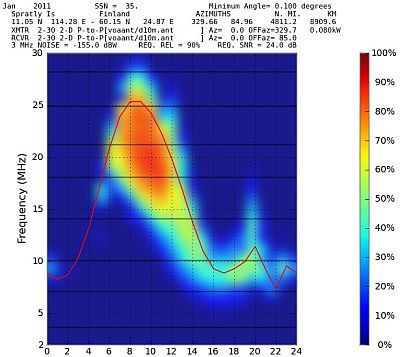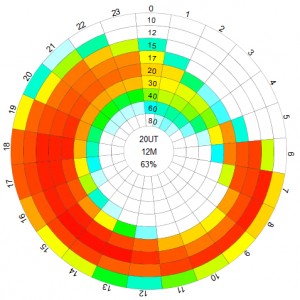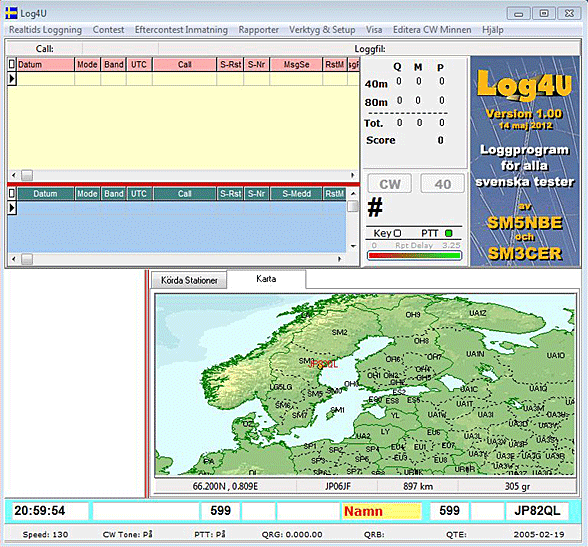Återigen har Jari OH6BG utökat möjligheterna på sin sajt www.voacap.com. Med hjälp av VOACAP på webben och ett verktyg man kör på sin egna dator, kan man i detalj planera när man skall vara på vilka band inför en test. Nu står IARU-testen inför dörren och Jari har gjort så att man “batch”-vis kan beräkna prognoser till alla ITU-zoner, som är multipliers i just IARU-testen.

Så här skriver Jari:
Propagation Planning for IARU/WRTC 2014
by Jari Perkiömäki OH6BG
If you wish to do some serious pre-contest propagation planning for the
upcoming contest (or any contest/DXpedition), you might be interested to
know that I have expanded my VOACAP Propagation Planner site at
www.voacap.com/planner.html .
Besides running batch predictions from one TX site to all CQ Zones, it’s now
possible also to run batch predictions to almost all ITU Zones (short path &
long path) as well. There is a separate analysis tool (for Windows & Mac) as
well as Excel Workbooks available to massage the raw prediction data into a
more readable form.
The manual is here:
http://www.voacap.com/planner/VOACAP-Propagation-Planner-Users-Manual.pdf
You can choose from a wealth of TX/RX antennas for each band as well as play
with powers, various sunspot numbers and set the Es layer parameter on and
off.
Currently, more than 110 locations covering most of the ITU Zones are
included.
The Propagation Planner gives you a good start for planning your operating
strategy, especially if you run the predictions for two different sunspot
numbers (SSN): 70 (predicted for July) and 140 (…or even higher for high
solar activity). For low bands, use the W6ELProp software or use grayline
maps (such as DX Atlas by Alex VE3NEA) for planning the best operating
times. Do NOT rely too heavily on VOACAP on low bands!
For those who want to give it a try at WRTC, use the following coordinates
for the TX site: 42.29N (Latitude: 42.29), 71.57W (Longitude: -71.57).
For making more interactive point-to-point propagation prediction
experiments, visit also www.voacap.com/prediction.html .




